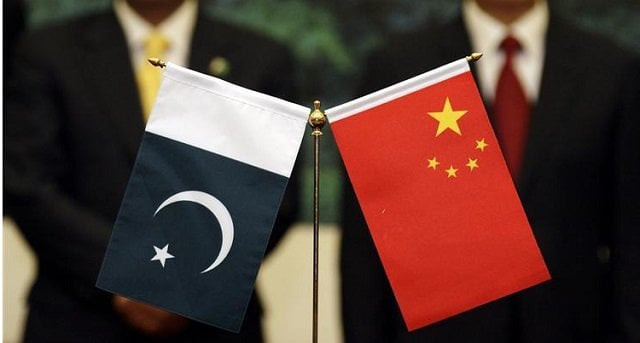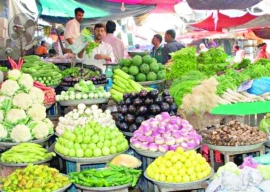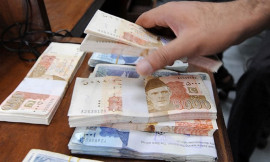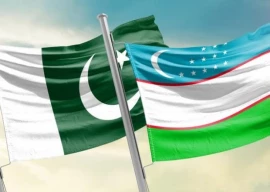
From April 11 to 14, the second Texpo, hosted by the Trade Development Authority of Pakistan (TDAP), was held in Lahore, Pakistan’s third largest city. China and Pakistan are world leaders in the textile industry while Weiqiao and ChenOne are famous in the industry of the two countries.
“Pakistan has an edge in its high-quality short-staple cotton, which is suitable for producing yarns of below 20s and can be used to make denim fabric. Pakistan exports a large amount of yarn of below 20s to China,” said Sun Jingying, General Manager of China Weiqiao Textile Co Ltd.
“Xinjiang’s long-staple cotton is used to produce high-count fabric very well,” he said while pointing to his shirt cuffs.
ChenOne Home Textiles is the first booth on the right side of the main aisle at the No 1 Hall of Expo Centre Lahore. “If we have to compare with China, I think Pakistan’s greatest advantage is that the cotton planted here is one of the best in the world,” said Pakistan ChenOne Home Textiles General Manager Muhammad Amir Mahboob.
Sun and Mahboob both mentioned one of Pakistan’s major advantages in textile – the short-staple cotton. But according to Dawn’s report, as of March 1, the cotton production in Punjab, Sindh and Balochistan – the top three cotton-producing provinces in Pakistan – was down 6.8% over the corresponding period of last year, and was expected to be the second lowest in eight years.
Analysis by Dawn suggests that the major cause for production shortage in the ongoing season is that against the nine million acres earmarked for cotton crop, only six million acres have been cultivated in 2018-19 and the use of poor-quality seeds and pesticides, resulting in a low yield per acre and causing heavy losses to cotton growers.
In this regard, Muhammad Siddique Rana, an exhibitor and CEO of MHR Exports, said agricultural production was unstable. “The bumper year usually comes after an off-year for production. It is unnecessary to worry too much about what the media report says,” he said.
Among the visitors, Xi Jianlong, Deputy Director of International Business Centre of Xinjiang Xinyan Mushen Technology Co Ltd, said the key to solving current problems was to increase per-unit area yield, but there were three limiting factors in Pakistan.
First of all, Pakistan has no breeding technology, so the local farmers use inferior seeds of Monsanto and Pioneer, which are less tolerant to the muggy monsoon temperatures in Pakistan. Second, Pakistan’s field management ability is weak, and the crops could not grow well because of a lack of water and fertiliser, Xi said.
Third, the low labour costs lead to insufficient mechanisation in Pakistan. Xi pointed out that the labour price is about $3 to $4 per day during a busy season in Pakistan, meaning the monthly salary is about 500 yuan ($74.5).
“They plant and harvest the cotton all by hand and use flood irrigation method. As a consequence, some cotton plant grows to 1.5 metres in height and some 50 centimetres in height. We use trickle irrigation and mechanised cotton topping technology with all the plants almost having the same height in China.
“Spending six dollars a day or 700 to 800 yuan ($119.2) a month seems like the trigger point for introducing agricultural mechanisation in Pakistan. We really hope to establish a model project in Pakistan, using our own seeds and machines to let Pakistani people truly see the effect of mechanised operations,” Xi concluded.
Gu Jie, Head of the Central Asia Comprehensive Experimental Station of the Cotton Research Institute of the Chinese Academy of Agricultural Sciences, has long promoted cotton farming techniques in Central Asia.
“When the output-to-input rate of cotton cultivation reaches 4 to 1, the farmers will consciously consider using machinery. Now that it is difficult to bring equipment in Pakistan, we, Chinese, can initially export the two key technologies of flood irrigation as well as soil testing and formulated fertilisation. As far as I know, these two technologies have been popularised in Kyrgyzstan and have been adopted in one-third of Tajikistan.”
Gu particularly pointed out that most of the countries that responded to the Belt and Road Initiative lived on farming and herding. Agricultural cooperation must be put on the agenda, he said.
“The Belt and Road Initiative will eventually be implemented by the enterprises. Seed breeding is our core technology. If the irrigating and fertilising technologies can be properly combined and transferred with part of seed breeding technologies, the initiative will be more active. The policy is supposed to be in line with strategy. In the current international trade environment, properly and conditionally transferring agricultural production out of China will resolve core risks and reduce the probability of counter killing. China should be more proactive,” Gu added.
This article originally appeared on the China Economic Net
Published in The Express Tribune, April 22nd, 2019.
Like Business on Facebook, follow @TribuneBiz on Twitter to stay informed and join in the conversation.

















COMMENTS
Comments are moderated and generally will be posted if they are on-topic and not abusive.
For more information, please see our Comments FAQ